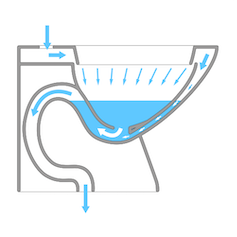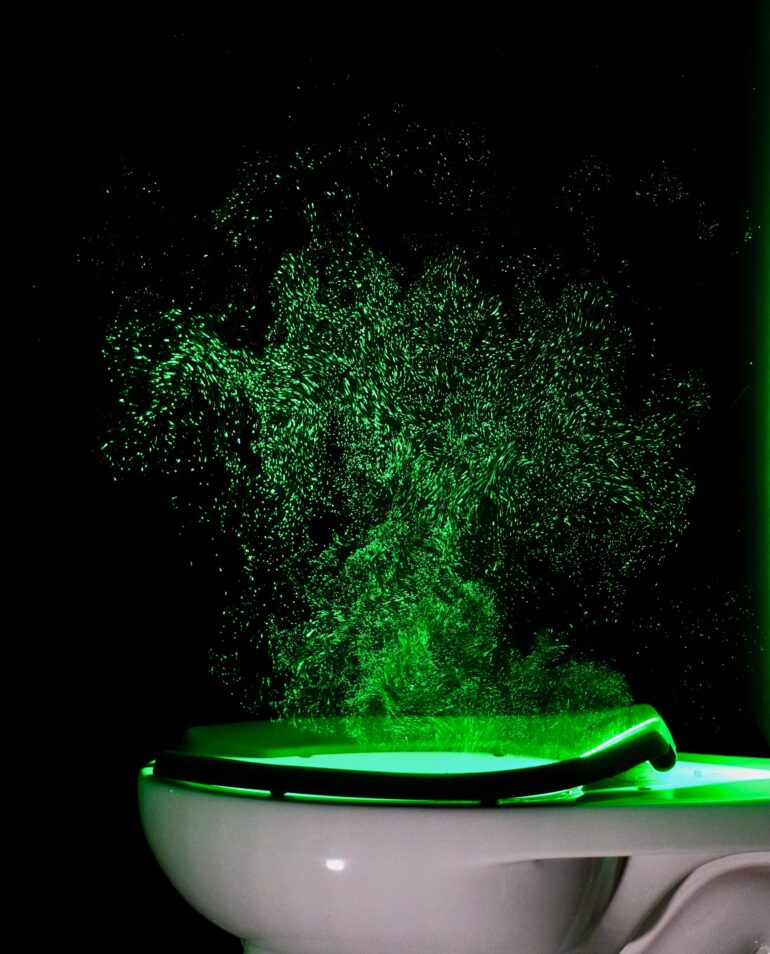Every time you flush a toilet, it releases plumes of tiny water droplets into the air around you. These droplets, called aerosol plumes, can spread pathogens from human waste and expose people in public restrooms to contagious diseases.
Scientific understanding of the spread of aerosol plumes – and public awareness of their existence – has been hampered by the fact that they are normally invisible. My colleagues Aaron True, Karl Linden, Mark Hernandez, Lars Larson and Anna Pauls and I were able to use high-power lasers to illuminate these plumes, enabling us to image and measure the location and motion of spreading aerosol plumes from flushing commercial toilets in vivid detail.
This video compares the visibility of an aerosol plume after a flush without and with lasers in a lab.
Going up instead of down
Toilets are designed to efficiently empty the contents inside the bowl through a downward motion into the drain pipe. In the flush cycle, water comes into forceful contact with the contents inside the bowl and creates a fine spray of particles suspended in air.
We found that a typical commercial toilet generates a strong upward jet of air with velocities exceeding 6.6 feet per second (2 meters per second), rapidly carrying these particles up to 5 feet (1.5 meters) above the bowl within eight seconds of the start of the flush.

Water streams forcefully into the toilet bowl during a flush cycle.
SouthHamsian/Wikimedia Commons, CC BY-NC-SA
To visualize these plumes, we set up a typical lidless commercial toilet with a flushometer-style valve found throughout North America in our lab. Flushometer valves use pressure instead of gravity to direct water into the bowl. We used special optics to create a thin vertical sheet of laser light that illuminated the region from the top of the bowl to the ceiling. After flushing the toilet with a remote electrical trigger, the aerosol particles scatter enough laser light to become visible, allowing us to use cameras to image the plume of particles.
Even though we expected to see these particles, we were still surprised by the strength of the jet ejecting the particles from the bowl.
A related study used a computational model of an idealized toilet to predict the formation of aerosol plumes, with an upward transport of particles at speeds above the bowl approaching 3.3 feet per second (1 meter per second), which is about half of what we observed with a real toilet.
Why lasers?
Scientists have known for decades that flushing toilets can release aerosol particles into the air. However, experimental studies have largely relied on devices that sampled the air at fixed locations to determine the number and size of particles toilets produce.
While these earlier approaches can confirm the presence of aerosols, they provide little information about the physics of the plumes: what they look…
